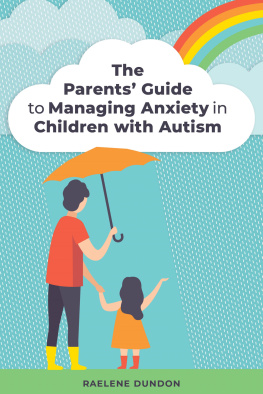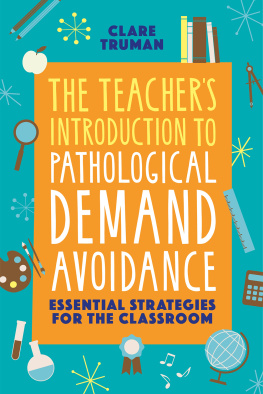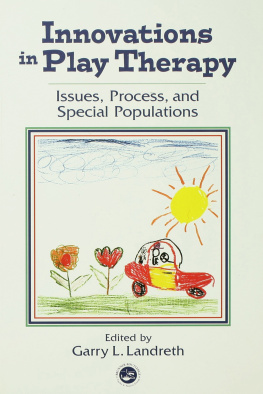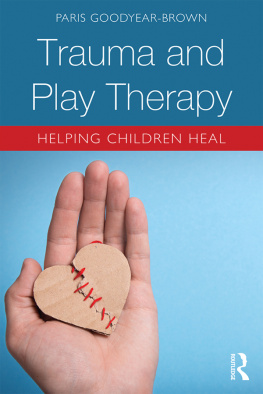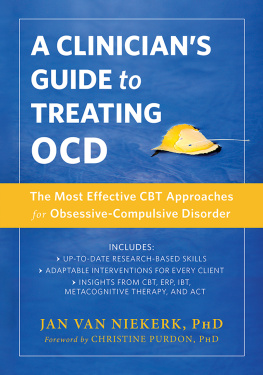Contents

PDA in the Therapy Room
A Clinicians Guide to Working with Children with Pathological Demand Avoidance
Raelene Dundon

Contents
Introduction
When I first learned about Pathological Demand Avoidance (PDA), it was a true light bulb moment. I had been specializing in supporting Autistic children and their families for over 10 years, but every so often I would see a child who wouldnt respond to the supports I had usually found effective. It seemed that now I finally had an answer as to why.
From a clinical perspective, it had always made sense to me that anxiety could be the driving force behind challenging behaviour in children, so the idea that extreme levels of anxiety in Autism could result in demand avoidance and oppositional behaviour seemed an obvious extension of this thinking. The fact that I was seeing children with this profile in my practice made it all the more real.
Since that day, I have been on a journey of discovery to find the best possible way to support my PDA clients and their families. It has led me to look deeper into the development of the brain and the neuroscience behind anxiety, and has pushed me to broaden my therapeutic skills to incorporate the principles of play therapy and creative arts in an effort to better connect with and engage the PDAers (individuals with PDA) I see each week.
The changes I have made in my therapeutic approach have resulted in a more positive experience for my PDA clients and have improved my clinical practice as a whole, and I continue to learn from the real PDA experts the PDAers and their families.
It is my hope that in writing this book, I am opening up the world of PDA to a wider audience and assisting those in helping professions to understand and accept the PDA profile of Autism as a legitimate condition in need of specialized supports.
I am also hopeful that in sharing what I have learned about working with PDAers in therapy, I can make the journey a little easier and less daunting for therapists who have the privilege of working with these amazing children in the future, and help make a difference to PDAers and their families who are so desperately in need of our support.
Please note that I use the terms clinician and therapist interchangeably in the book, and that the names of any clients mentioned have been changed to protect their privacy.
Chapter 1
What Is Pathological Demand Avoidance?
Pathological Demand Avoidance (PDA) is considered by the National Autistic Society in the UK to be a subtype of Autism Spectrum Disorder characterized by extremely high levels of anxiety, which result in an individual constantly trying to control their environment. This need to be in control and feel safe results in opposition and avoidance of everyday demands, difficulties with emotional regulation, and often severely challenging behaviour.
When they do not feel in control of their environment or have a choice with regard to their actions, individuals with PDA often feel their wellbeing and sense of safety is being threatened. In an effort to regain control, many individuals with PDA will first try negotiation, distraction and other social means to avoid demands. If these strategies do not work and their anxiety continues to rise, the fight, flight or freeze response is triggered and can result in behaviour such as opposition, resistance, defiance, arguing or aggression. This behaviour is not a conscious choice, but rather an automatic physiological and neurological reaction that is designed to keep the individual safe from the perceived threat.
In this chapter, I will share a brief history of and current diagnostic considerations for PDA, as well as a description of the clinical features of the profile. Then I will answer some frequently asked questions about PDA. Much of this information has been adapted from resources produced by the PDA Society.
A brief history
While PDA is relatively new, first being identified by Professor Elizabeth Newson in the 1980s, and is seen by some as controversial, it is becoming more widely acknowledged worldwide as a condition that needs to be better understood and recognized, to enable individuals with PDA to access appropriate supports.
Professor Newsons early work identifying and supporting individuals with PDA was followed by a significant push by parents of children who fit the PDA profile to be listened to and supported by professionals and educators, resulting in the formation of the PDA Contact Group, which later became the PDA Society. While this parent advocacy movement was occurring, clinicians and researchers in the UK were also working to raise awareness and understanding of PDA, with a significant milestone in PDA history occurring when Phil Christie presented on PDA at the World Autism Conference in 2006.
The National Autistic Society included PDA as part of the Autism Spectrum on its website in 2015, and in 2017 the cooperative research centre for living with Autism in Australia, Autism CRC, included PDA in its best practice guidelines for Autism diagnosis and supports, signifying the beginning of recognition of PDA internationally.
Diagnostic considerations
PDA is not currently recognized as a specific condition in the Diagnostic and Statistical Manual of Mental Disorders 5th Edition (DSM-5) or International Classification of Diseases 11th Revision (ICD-11), the main diagnostic manuals used worldwide, but it is becoming more widely recognized as a profile of behaviour that exists in a proportion of the Autistic population. As such, there are increasing numbers of professionals open to investigating and diagnosing PDA in both children and adults.
A comprehensive assessment is likely to involve diagnostic measures for Autism and anxiety including a full developmental history, information from multiple settings, observation of the child at home or school and direct interaction with the child or adult. Ideally, diagnosis should involve a multidisciplinary team (e.g. paediatrician or psychiatrist, psychologist, speech pathologist and occupational therapist). It is also important that diagnosing clinicians gather enough information to make differential diagnoses and identify any additional presenting concerns such as trauma, Post-Traumatic Stress Disorder (PTSD), Attention Deficit Hyperactivity Disorder (ADHD), sleep or eating difficulties or other psychiatric conditions that may be co-occurring.
As PDA is currently considered a subtype of Autism Spectrum Disorder, it is most common to see individuals diagnosed with Autism Spectrum Disorder with an additional descriptor mentioning PDA such as Autism Spectrum Disorder with demand avoidant traits/extreme demand avoidance/a PDA profile. Individuals may also receive a diagnosis of Generalized Anxiety Disorder (GAD) as a way of highlighting the underlying anxiety present in PDA.
Key features
Individuals with PDA present with features consistent with a diagnosis of Autism Spectrum Disorder.
According to the DSM-5, a diagnosis of Autism may be made when an individual has a developmental history and presentation that features marked impairments in social interaction and social communication skills across several areas, and restricted and repetitive behaviours and interests (including sensory sensitivities) that have a significant impact on daily functioning.
While all Autistic individuals share these common characteristics, the presentation of features varies considerably from individual to individual, and the difficulties Autistic individuals experience may not always be obvious to others in the community.


